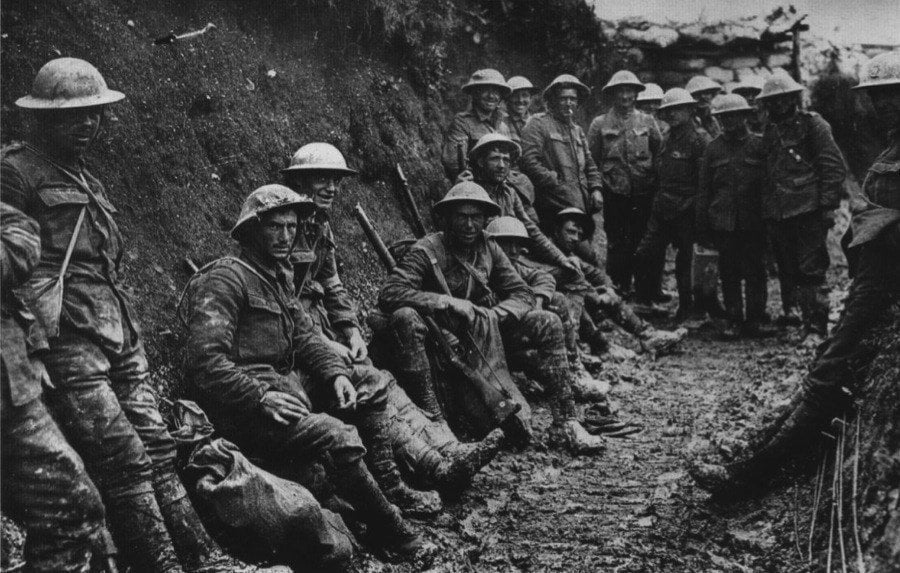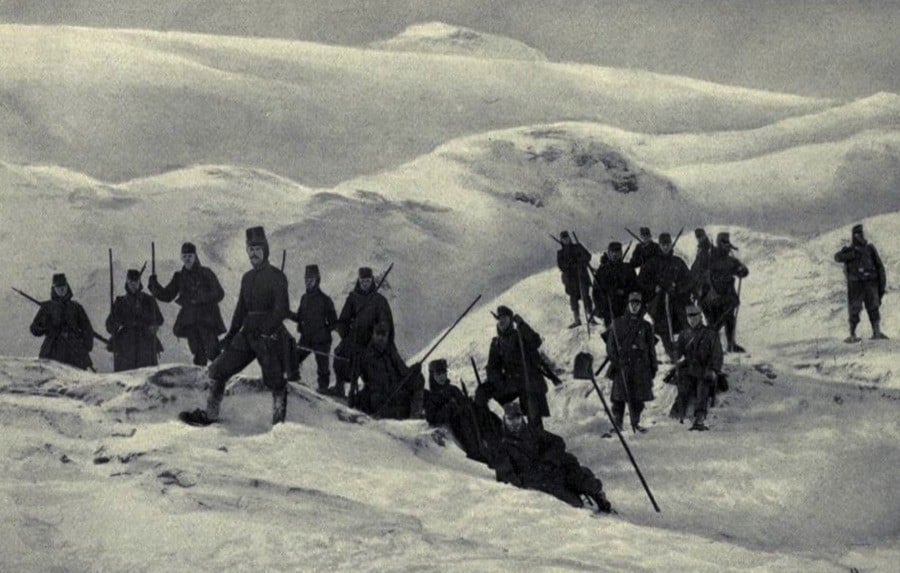From the trenches to the apocalyptic battlefields, these World War I photos capture the tragedy of the conflict that was unlike anything the world had ever seen before.
World War I was not , as it ’s commonly known , “ the warfare to terminate all wars . ” It was just the beginning of the form of advanced mass violence that would add up to define the twentieth century . For the first time , the armies of Europe used such shaft of trouncing as the flamethrower , poison natural gas , the tank , and warfare planes . But the range that most often ghost World War I photos is that of soldiers in the trenches .
From the deep to the lesser - known terrors of this cataclysm that left some 40 million bushed , see the pic from World War I below :
Like this gallery?Share it :

The so-called Royal Irish Rifles pose for a picture at the beginning of the 1916 Battle of the Somme, one of the war’s largest battles.
The Horrors Of Trench Warfare Revealed In The Most Brutal World War I Photos
WhenWorld War Ibroke out , oceanic abyss war was n’t Modern . It had been around since the fourth dimension of the papistic host , when soldier routinely dug pits around temporary bivouac as a defense against midnight attacks . It had been used , too , in later conflicts , including the Napoleonic Wars and the American Civil War .
But by 1914 , the playing field had change . Advances in weaponry think that rifles and artillery could now shoot far and at a faster rate than ever before .
Armor could no longer efficaciously prevent hummer wounds , and a single gunslinger , if the right way shielded , could take out several blame enemies before they even reached his post .

Entrenchment , then , was the obvious tactical pick at the starting time of the war : soldier would turn over recondite ditch at the most advanced position they could nurse , then passel over the top of the embankment and fire at the enemy .
The results of a frontal attack on an entrenched opposer were annihilating . military man who go " over the top " — that is , leap over the trench to speed foe lines — were killedalmost instantly . At the Battle of the Somme , an forecast 20,000 British soldiers lose their life in a brave and finally vain charge .
The combatants of World War I quickly realized that ground forces could seldom hope to snipe from the front : if they desire to make any progress , they would have to sneak around the side of the trenches to outflank their opponent .

To debar falling target to this simulated military operation , the opposing United States Army would then have to extend their trench , toil parallel to their foe ’s personal credit line in an interminable backwash to the sea .
The repercussions of this strategy were a blinking , paralyzing deadlock as both USA attempt to stretch until they could stretch no farther . Historians count on that the trenches of the Western Front , laid end to end , would stretch out 25,000 miles from start to close .
It was a state of war of detrition , and that ’s what World War I photo enchant : a lifetime of trenches , marching to trenches , and occasionally the briefest moments of respite .

The Brutality Of Trench Warfare
There were several different ways to dig trenches , but all of them require the manual British Labour Party of soldiers , and all of them were dangerous .
The riskiest method was also the simplest : soldier would form a origin and start to shovel . It was slow , afflictive work , and it commonly needed to be conducted under the cover of darkness to avoid attracting enemy care .
British military guidepost counsel that with this approach , 450 man could be count on to produce a 250 - metre - long deep system in approximately six minute . And for much of those six hour , the troops would be vulnerable to foeman fire .

It was safer to expand the trench from within . This practice was anticipate sapping , and it required soldier to stand at the farthermost reach of the trenches and set about , human foot by foot , to cover them . Only a limited number could work within the minute recesses , which meant progress was slow .
Though it protect soldier , sapping was n’t covert — the enemy was likely to spot the expansion and embark on an annex of their own . The safest and sneakiest approaching to intrenchment was tunneling .
Soldiers would hollow retentive tracts of worldly concern and then , when the time was veracious , simply bump off the overhead covering . But what they saved in origin they paid for in time lost ; tunneling was the sluggish way to progress trenches .

How World War I Photos Capture The Desperate, Bloody Stalemate
survive World War I photos of the Western Front depict a kind of moonscape , a grey-haired , barren farming pockmarked with canal and burrow . oceanic abyss were n’t , after all , great parallel lines bisecting the Western Front . They were more like maze .
First , there were the trench at the front , typically fall apart from enemy trenches by just 50 to 250 yards of unresolved subject field called " no human ’s earth . " It was a bolt down field , spotted with barbed wire , landmines , and fallen soldiers killed in failed midnight raids .
Next came the bread and butter trenches , where soldiers would retreat after a prolonged arrest on the front line of business . And then , of course , there were the passages that connected them , the young additions , and multiple levels to navigate .

World War I photograph of the Somme field of honor , the site of one of the fucking engagements in human history , show a twisting rabbit warren of deep that release every few yards . In the bedlam of the combat , with mustard greens gas float overhead and the roar of gunfire all around , many soldiers report having lost their way alone .
The Unprecedented Battle Conditions Of The Great War
The photos of World War I also document the realities of deep conditions . The ditches were deeply unsanitary . Rats were always on the prowl , eating out at provisions and log Z’s soldier alike . Together with the louse , they spread disease like trench fever , a abominable illness that affect suddenly and could lame a soldier for a calendar month or more .
Trench fundament was also a serious cause for concern ; the planks lay at the bottom of the ditch were n’t always enough to keep a soldier ’s foot out of the rotting mud that inevitably flood the tunnels when it rain . bacterium and the constant damp could lead to an transmission only amputation could cure , and more than a few fingerbreadth and toes were lose to frostbite . Many died of exposure .
But World War I photos also show some uncommon minute of kindness , the brief glimpses of a indulgent side of life at the front . An English soldier offers a wound German prisoner a fag . British soldier convey holly back to coterie for Christmas . An Austrian soldier plays a fiddle .

These , too , are part of the history of World War I — a story we must never forget .
Want more images from history ’s greatest conflicts after you ’ve seen these World War I photos ? See ghost photos from theBattle of the Somme , then learn about theWorld War I Christmas Truce of 1914 .










